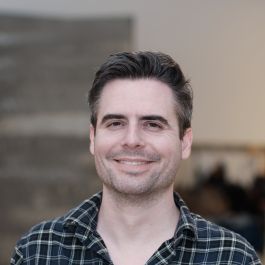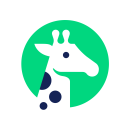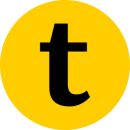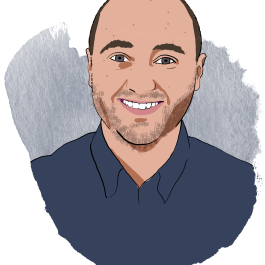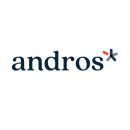Being part of an expanding team is nothing short of exciting. And why shouldn’t it be? It likely reflects traction and a demand for your organization’s product or services — and, concurrently, piques the interest of a talented job seeker who can impact to the company.
But charging ahead means having the right blueprint to shape how you move forward. You can’t just hire more people and expect everything will work itself out.
A takeaway from the growth at HireArt? In connecting with Co-founder and CEO Nick Sedlet a key lesson came through: Adapt to circumstances.
As the company’s engineering team doubled in about one year, the need to reorganize accordingly became apparent during regular team meetings.
“Scrum was becoming unwieldy with eight people, so we split the engineering team into two pods. Each pod has a rough product focus and is led by an engineering manager,” Sedlet said, adding that the hiring of a product manager has been a boon for the team.
We sat down with the three NYC tech pros to better understand the staffing up their teams have experienced, how they seek to scale their teams accordingly and the work that’s on the horizon for them.
Why did your engineering team need to be expanded so quickly?
We’ve historically operated with somewhat limited resources. We managed to build a great product and codebase, but it’s complex and it’s taken heroic efforts to get there. We have also had to say no to many projects we’re excited about. As our revenue grew last year, we were excited to be able to afford to expand the engineering team. We currently have eight engineers, up from just four last year. We’re aiming to grow the team to 15 by the end of the year.
What was the process of scaling like and how long did it take? Were there any hiccups or aha moments to share?
We have always tried to maintain a high-quality codebase and keep technical debt to manageably low levels. That’s made it way easier to onboard new folks and make sure they’re able to be productive.
We’re still quite small and haven’t done anything super surprising as we’ve scaled. The biggest thing we did in going from four to eight engineers was instituting two-week sprint cycles and using Jira to track tasks and hold ourselves accountable. We’re considering switching to even longer cycles.
We also did not have any dedicated product managers until recently; I oversee engineering at HireArt and previously did all the PM work. I’m thrilled and relieved to have our first PM — who’s fantastic — and I wish we’d hired someone much earlier. We got to a point where everyone in the company was coming to engineers with requests and it was overwhelming and distracting for them. Our PM helps triage, prioritize and shape projects before engineers hear about them.
As our revenue grew last year, we were excited to be able to afford to expand the engineering team.”
What’s the most exciting project your engineering team will be taking on in the next few months?
We’re going to be building out real performance management that sits on top of our time and attendance system. This isn’t something that exists in our industry today. We believe in two-way feedback between workers and their managers. It’s an interesting challenge to figure out how to collect that in a high-conversion way and deliver it thoughtfully and visually. When we say we employ W2 contractors, we mean that we embrace the massive responsibility that comes with being the employer. We think there’s a huge opportunity to offer a great employment experience to workers and managers.
We’re also building a feature that will allow staffing agencies to plug into HireArt on a revenue-share basis. We think this is the future of the industry, and it’s a multifaceted problem to solve with interesting customer UIs as well as a fintech and payment flow side.
Why did your engineering team need to be expanded so quickly?
At Tapestry, we are constantly identifying new ways of working. Currently, we are building some cutting-edge platforms, leveraging machine learning and AI to help integrate core processes across our business. We’re leaning into software engineering to help drive technological innovation for all of our brands across our shared Tapestry backbone. I’m leading this team, which we are currently expanding to help develop some exciting new features as part of the platform.
What will this expansion do for the company overall?
Tapestry is transforming into a tech-forward company that creates advanced and scalable technology products to power our brands. Scaling helps us to accelerate innovation, bring efficiency through automation and reduce costs across the business. During the scaling process, technology is an enabler and a key differentiator to both our in-store and online initiatives.
Scaling helps us to accelerate innovation, bring efficiency through automation and reduce costs.”
What’s the most exciting project your engineering team will be taking on in the next few months?
As we continue to evolve into a more technology-driven business, we are utilizing machine learning and AI to rapidly address changing customer preferences. By leveraging data, machine learning and software tools, we can transform some of our core processes such as demand planning and supply chain, into more data-driven, predictive, collaborative, customer-centric and automated processes.
For our employees, we’re closely aligning our machine-learning algorithms and data science models with software that teams use to make decisions, giving us significantly more value from both. By doing so, we bring advanced analytics to the point of decision making and make it more intuitive for teams to apply insights they derive from our modeling assets directly in their day-to-day tools.
Tell us about your engineering team and your role on it. Why did it need to be expanded so quickly?
As the CTO at andros, I partner with all product and engineering teams building and architecting scalable systems that support healthcare’s first industry solution to help organizations build and maintain their network of providers. Over the last year we have had a lot of success expanding our client base, which has allowed us to continue to push our SaaS platform capabilities higher. We have introduced a number of new features like our API and expanded the configurations of our workflow and recruiting platforms.
At andros, one of our core values is ownership; we organize our teams around this concept and allow team members to own their roles. We want to give space so all voices are heard and innovation can thrive. Teams take the form of pods that focus on a specific part of the application over a long period of time. This allows engineers to become subject matter experts while also maintaining a long-term architectural focus on our applications. In keeping with our core values, increasing our product scope means we need to have enough engineers to give those new product features the right ownership and leadership. Our rapid growth means we had to hire a significant number of new engineers quickly.
What was the process of scaling like and how long did it take? Were there any hiccups or aha moments to share?
Doubling our engineering team within the last year was a significant task. Andros has an amazing culture of ownership, innovation and inclusion. We look to build our teams with people who love solving new problems together. A big focus for us in the interview process is making sure we are inclusive and equitable. One of the most important things we have discovered is that transparency is key to our recruiting success. When an engineer chooses to work at andros, they are choosing to continue the process of building their career here. We want to support that by aligning with them from the beginning on their long-term goals and objectives.
We look to build our teams with people who love solving new problems together.”
What’s the most exciting project your engineering team will be taking on in the next few months?
Andros has a rich data platform that streamlines the process of intelligently building and maintaining healthcare networks. Our core technology uses search capabilities with a lot of data to optimize that process. We are working on innovative tools that leverage that data to create configurable and optimized workflows. Over the last few years we have continued to refine our data collection and processing capabilities, and this year our theme is leveraging those assets with configurable tooling. Many of our development teams are engaged in the creation of those exciting new tools while other teams are working on scaling our systems to the next level.


